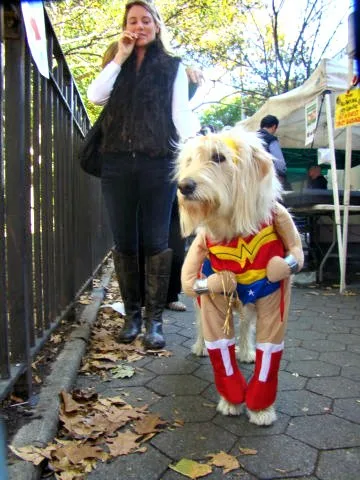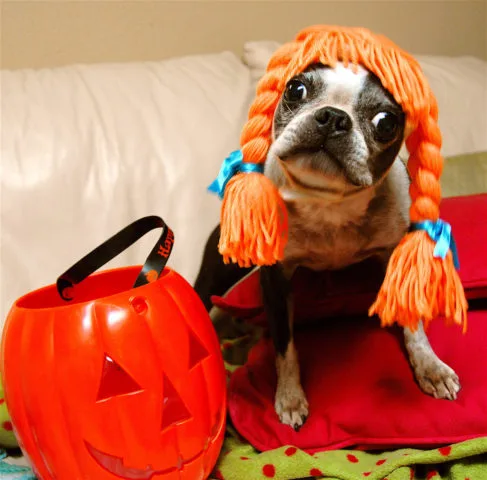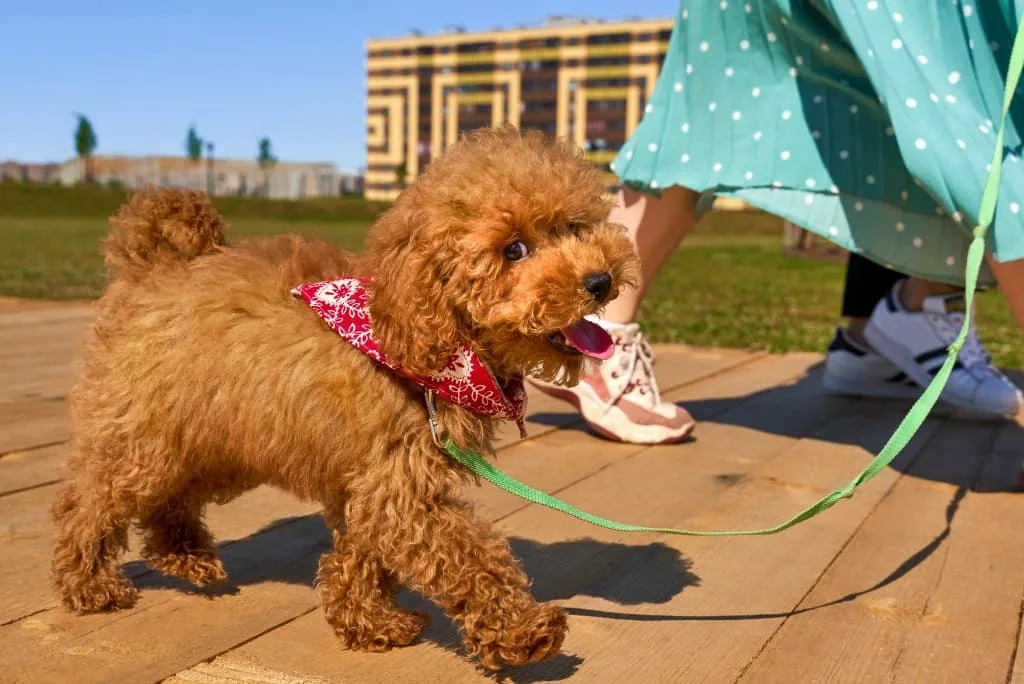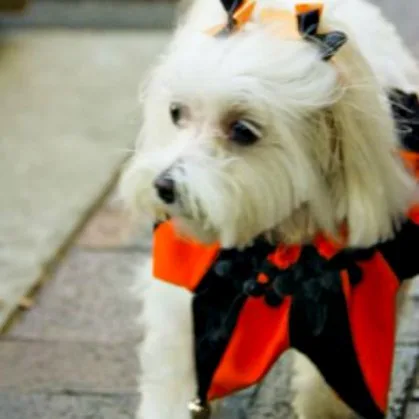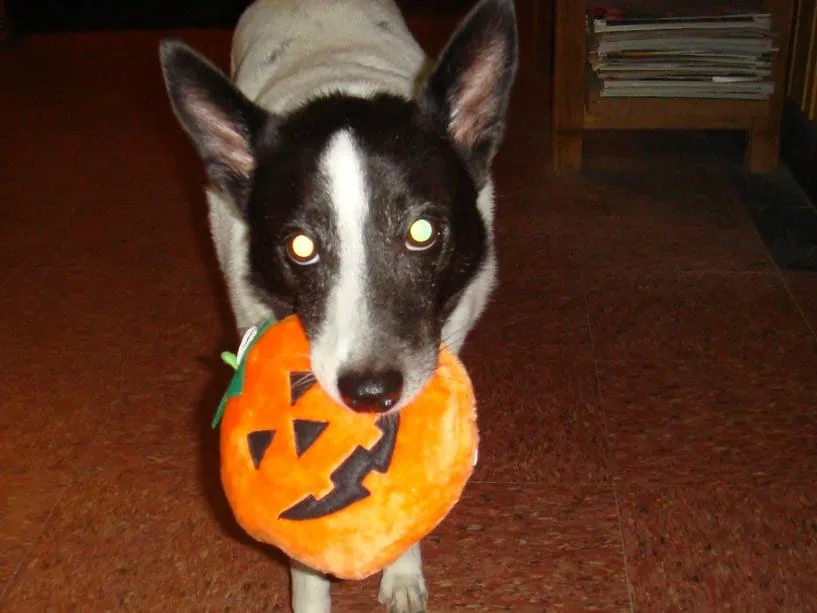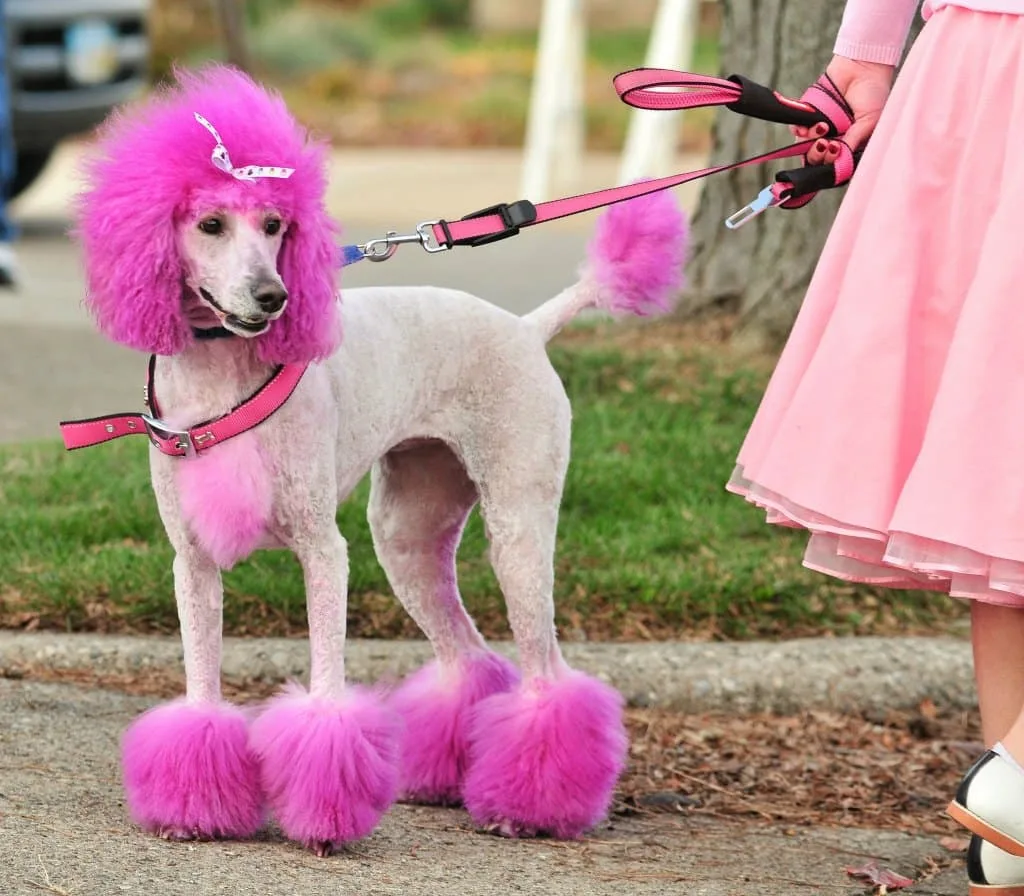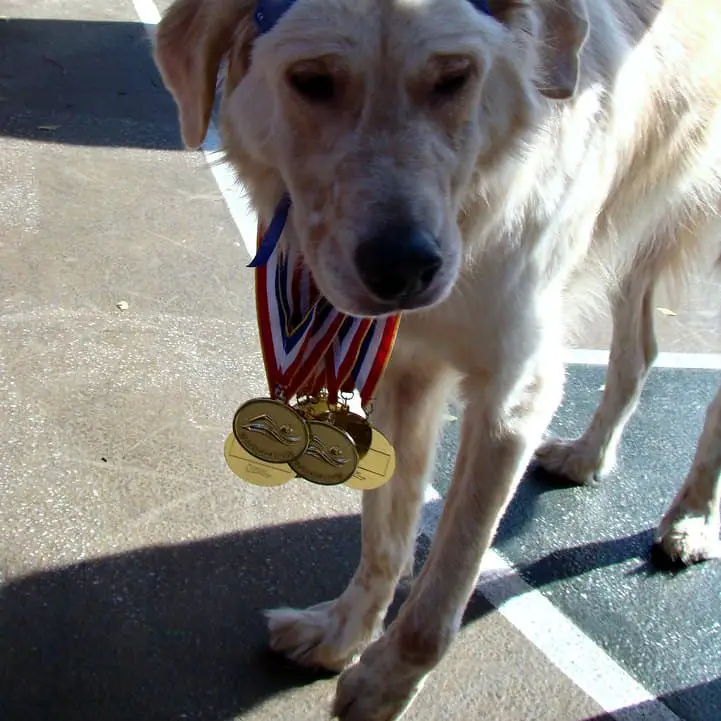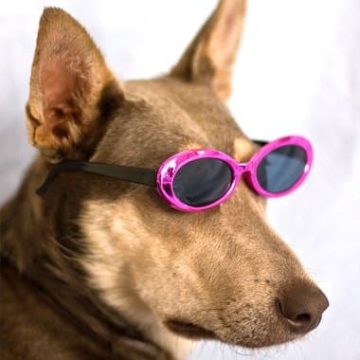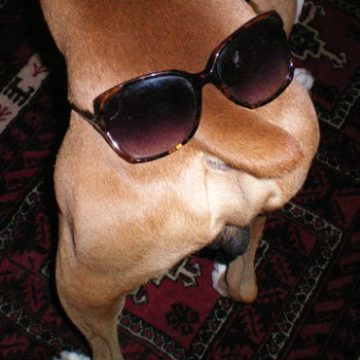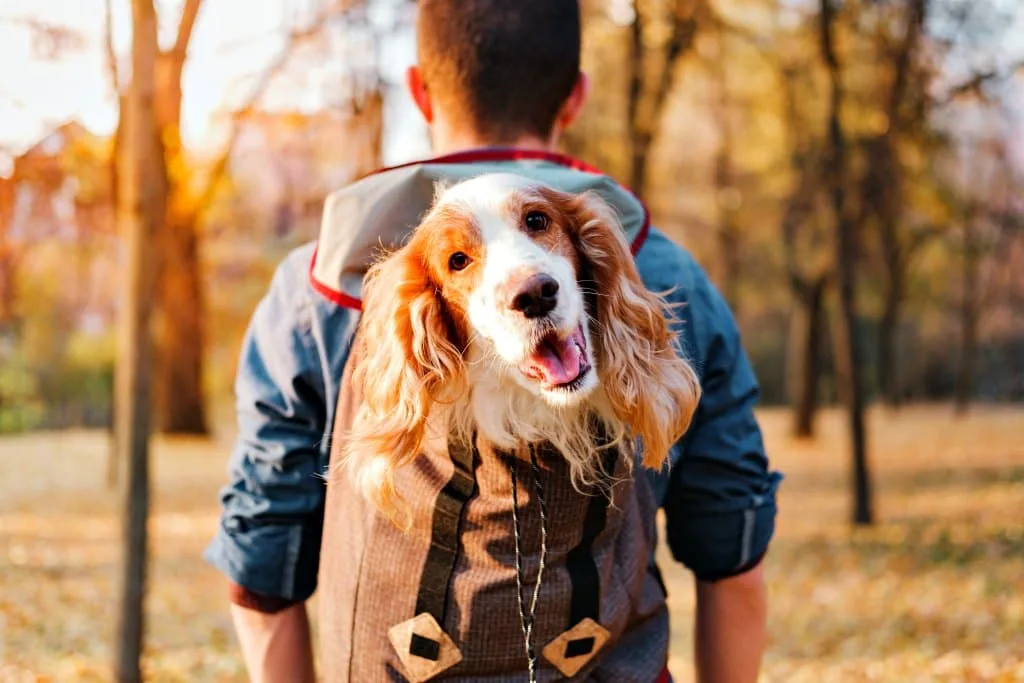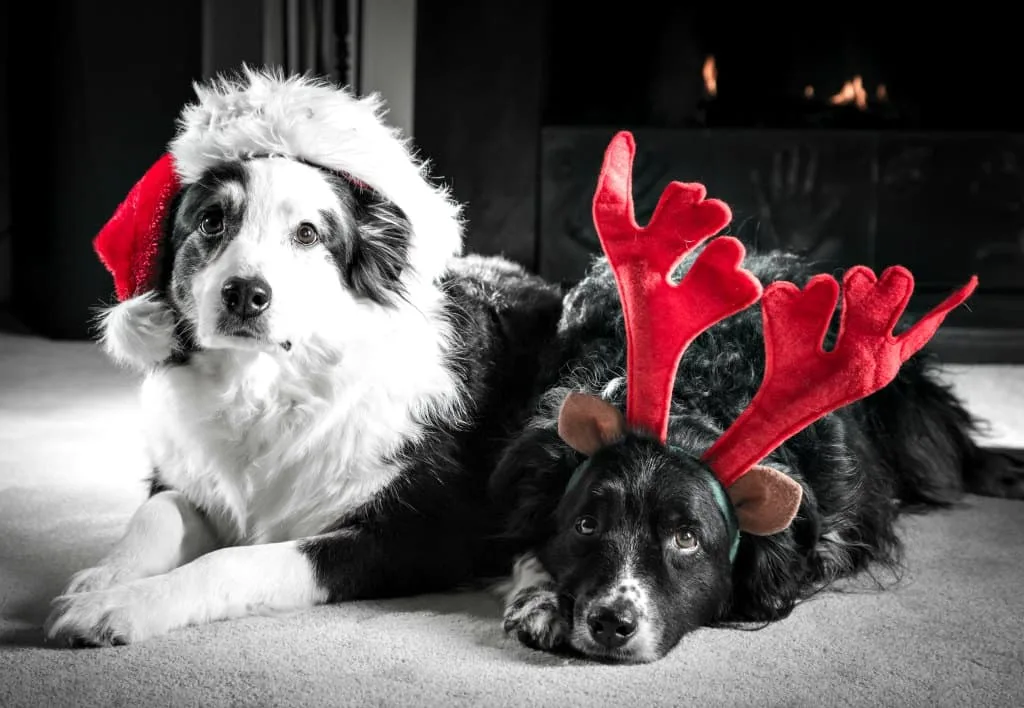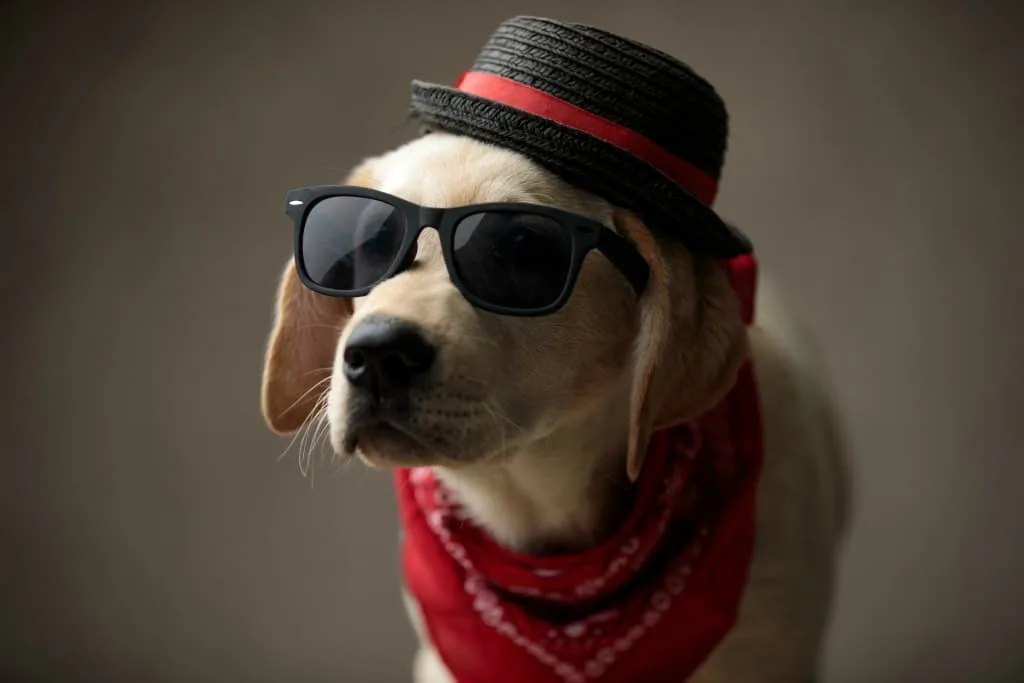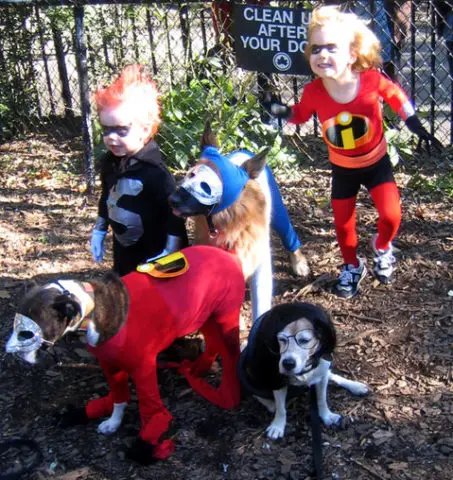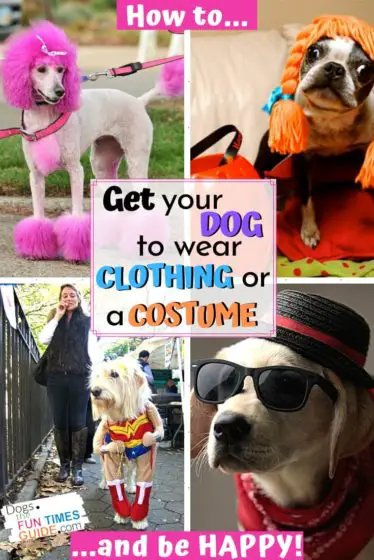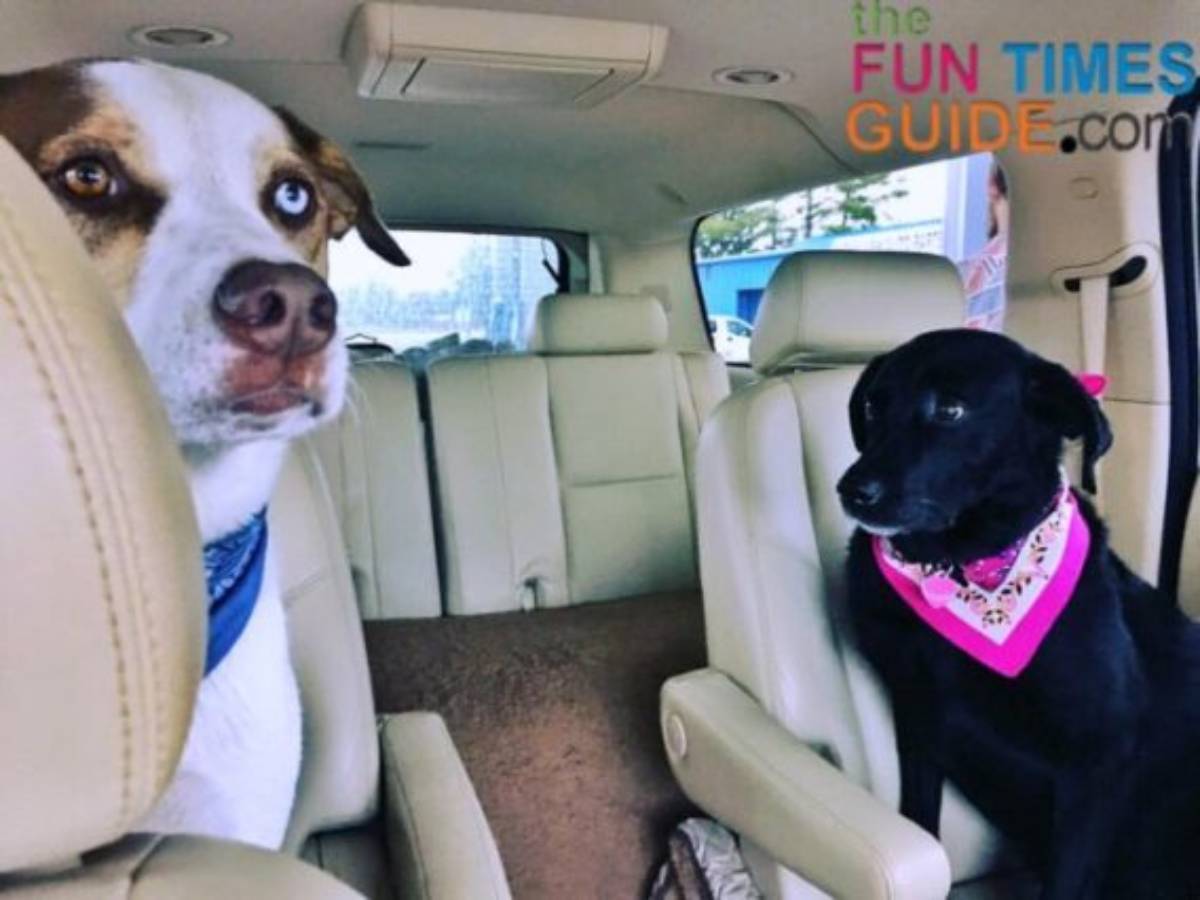Are you planning to participate in a pet parade with your dog?
Maybe you’ll be entering a pet Halloween costume contest this year.
Or perhaps you’re just thinking of taking your dog trick or treating with you…
Here’s a word of advice: make make sure that your dog doesn’t mind being dressed up first! (And be sure to try this several days before the big event.)
Trying to get a dog to wear clothes — or a Halloween costume — can sometimes be tricky. Your dog may not like the feeling of wearing a strange, bulky outfit. Not to mention the fact that some dogs don’t even like wearing clothes at all.
Must read: Do Any Dogs Really Need Sweaters Or Coats?
Here’s how to get your dog to wear clothes or costumes…
How To Get Your Dog To Wear Clothes
Your first step is to simply get your dog used to wearing things.
Start with very basic items, like a hat, sunglasses, or hair ribbons. You don’t have to go out and buy these things. You can experiment with your own items because you’re just trying to get your dog used to having things on him for short periods of time. He won’t be playing with them on his own.
As with any form of dog training, be sure to use your dog’s favorite treats and praise even for very short periods of sitting still with the item on.
From there, try a t-shirt (either a doggie-sized one, or a small child’s shirt) and/or a pair of shorts (again, made just for dogs or a child’s pair). Again, give treats and lots of praise for every little bit of improvement toward keeping the item on without pawing at it, biting it, or running away.
Finally, depending on how far you want to take it — or what’s included with your dog’s costume — dog boots take some extra time for most dogs to get used to. I recommend getting your dog used to wearing a soft, comfortable pair of child’s socks before trying dog footwear that is bulky or confining.
My dog is pretty easy-going and he will sit through just about anything you put him through — from trimming nails and brushing teeth to wearing hats and sunglasses. But… the dog boots we bought for him to wear in the winter definitely took the most time to get used to. It was a gradual success, rather than an overnight success.
TIP: You might want to try just the front paws or just the back paws first — some dogs feel more comfortable that way. But my dog did better when we went all out and put socks on all four paws at once.
Depending on the dog, it could take anywhere from 1 day to many months of trying to get your dog comfortable with wearing clothes.
In the end, if your dog just doesn’t like wearing clothes, then don’t force him to wear them. That will just stress out your dog and lead to other problems.
How To Get Your Dog To Wear A Halloween Costume
As long as you use positive reinforcement and experiment with simple items of clothing first — as mentioned above — you should be able to get your dog to wear a Halloween costume in no time.
As with any item of clothing, it could take several days or several months before your dog is comfortable with wearing a costume. It all depends on the dog.
Please… if your dog just doesn’t like wearing the costume you bought or made for him, don’t force him to wear it. Doing so will really stress out your dog and won’t be fun for anybody — you, your dog, or the people & dogs around you.
8 good alternatives for non-costume wearing dogs:
#1 – Dog bandanas – Not all of them must be folded & tied. Some are actual dog collars, so they’re less restricting and feel like your dog’s own collar. Others can be worn on the head (like a scarf).
#2 – Halloween dog collars – These have fun decorations and sayings specifically about Halloween. Again, most dogs are used to having collars around the neck area.
#3 – Dog Halloween toys – Maybe your dog will carry one around, or you could just carry them in your arms with your dog or place them in your dog’s stroller.
#4 – Dog hair dye – It’s a simple way to change your dog’s overall look. Orange dog hair dye would be good for Halloween, but it’s not the only color. For example, pink dog dye and green dog dye would look great on the right dogs! Plus, you don’t have to dye all of your dog’s fur… maybe just some highlights would be fun. (Or, for a spa day costume, just put rollers in your dog’s hair!)
#5 – Banners, signs, jewelry – Hung loosely around your dog’s neck, the right combination of items could make a unique look or statement. But don’t take your eyes off your dog while wearing the bling — because those items could become strangle your dog if they get caught on something — like my dog’s chain collar did!
#6 – Sunglasses or doggles – You can experiment to see where your dog tolerates wearing them best: over his eyes, or over his tail!
#7 – Backpacks & tote bags – If your dog is more comfortable being carried than walking, then you could dress up as a hiker and tote your dog around in a hiking backpack! Or, carry your dog around like Toto in a basket from the Wizard of Oz.
#8 – Hats, headbands, other headwear – My best tip if your dog doesn’t like wearing costumes is to keep practicing with a basic dog Santa hat. It’s simple. It’s festive. And while your dog may not win any pet costume contests, once your dog gets accustomed to wearing it, you can get 2 holidays of use from it — Christmas and Halloween! There’s nothing wrong with a dog going as a simple Santa Claus (or would that be Santa Paws?) for Halloween. My dog did one year.
TIP: If you can’t get a Santa hat to stay on your dog’s head, try a smaller hat with less material to flop around. Or, add your own thicker elastic band to secure it in place. You could also make your own dog Santa hat with a thicker neck band than usual — so it will stay in place comfortably. Or just go with a pair of headband antlers instead. (Headbands tend to stay on a dog’s head much better.)
Here’s our photo gallery filled with pictures of dogs wearing Halloween costumes!
Do This To Keep Your Dog Safe (And Happy!) In A Dog Halloween Costume
Now, since pets wearing costumes poses some unique safety issues (both for you and your dog), here are 8 important things that you’ll want to think about before heading out the door with your dog in costume:
- Use your best judgment as to whether your dog will wear a costume and be comfortable in groups — or whether it will freak your dog out. You will know this better than anyone else. Only you know how your dog reacts around other dogs, kids, and strangers. If your dog isn’t comfortable in loud groups, then you may want to think twice about entering him in a parade or costume contest. Without a doubt, you need to make sure that you always have adequate control of your dog during the times when he is close to other dogs and people.
- Make sure that you will be able to maintain control of your dog at all times when he’s in the costume — just like you do when you’re on a regular walk. That means being able to attach his regular leash and/or harness while the costume is on.
- Don’t leave home without your dog wearing a collar and ID tags — you never know what might arise when you’re out & about. If your dog should get separated from you for some reason, his ID tags will be the only way to ensure that your dog finds his way back to you.
- Make sure your dog’s Halloween costume doesn’t have any parts to it that could accidentally bind him or cause him to get caught up in or trip over. Just the same, remove any parts that he could choke on or that might be poisonous to your dog if he swallowed them.
- It gets hot inside costumes — so you will need to find ways to prevent your dog from overheating inside the dog Halloween costume that you pick. Make sure it’s not too tight on him, that there is plenty of room to breathe, and that he’s not panting too much.
- Make sure that your dog is highly visible — because not everyone will expect to see a 2-foot gobblin walking next to you. If there’s any chance of it getting dark while your dog is out & about in costume, then use a reflective leash and/or dog collar. They also make reflective leg bands for dogs (That means up to 4 opportunities for your dog to be noticed!) Or, you could attach a blinking light to your dog’s collar to make him more visible at night.
- Keep your dog from becoming thirsty — because he will probably be walking more than usual. Take along a water bottle for your dog to ensure that he never becomes dehydrated — because you probably don’t know just how long the day’s events will last.
- Don’t allow your dog to eat things found on the ground or eat treats received from strangers — at least not until you get home. Many people don’t realize that chocolate is bad for dogs, as is Xylitol (found in sugarless gum and candy). Plus, if your dog doesn’t normally eat human foods at home, then you don’t want him to get them when he’s out & about either.
Here are more of our dog Halloween safety tips: 7 Things You Might Not Think Of!
The Best Dog Halloween Costumes
Haven’t found a Halloween costume for your dog yet?
- Here are lots of fun DIY Halloween costumes you can make for your dog!
- These are our favorite dog Halloween costumes you can buy.
Like this post? Save it to read again later… or share with others on Pinterest!

